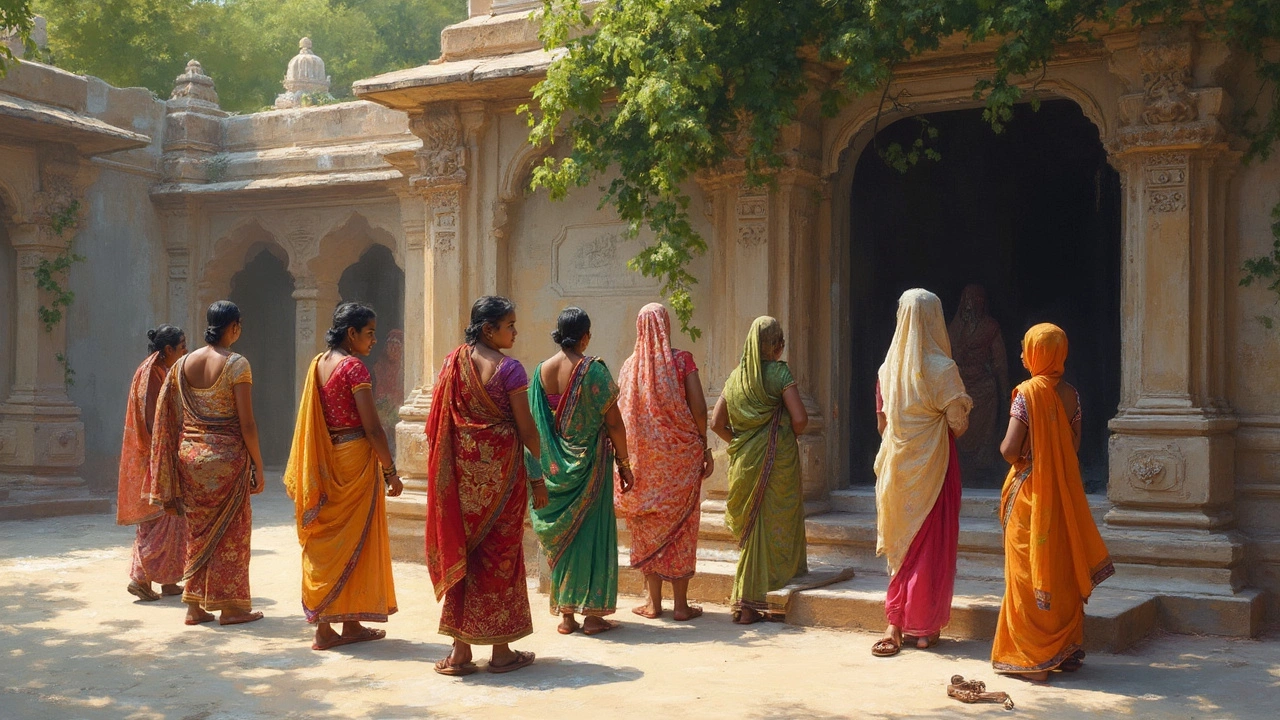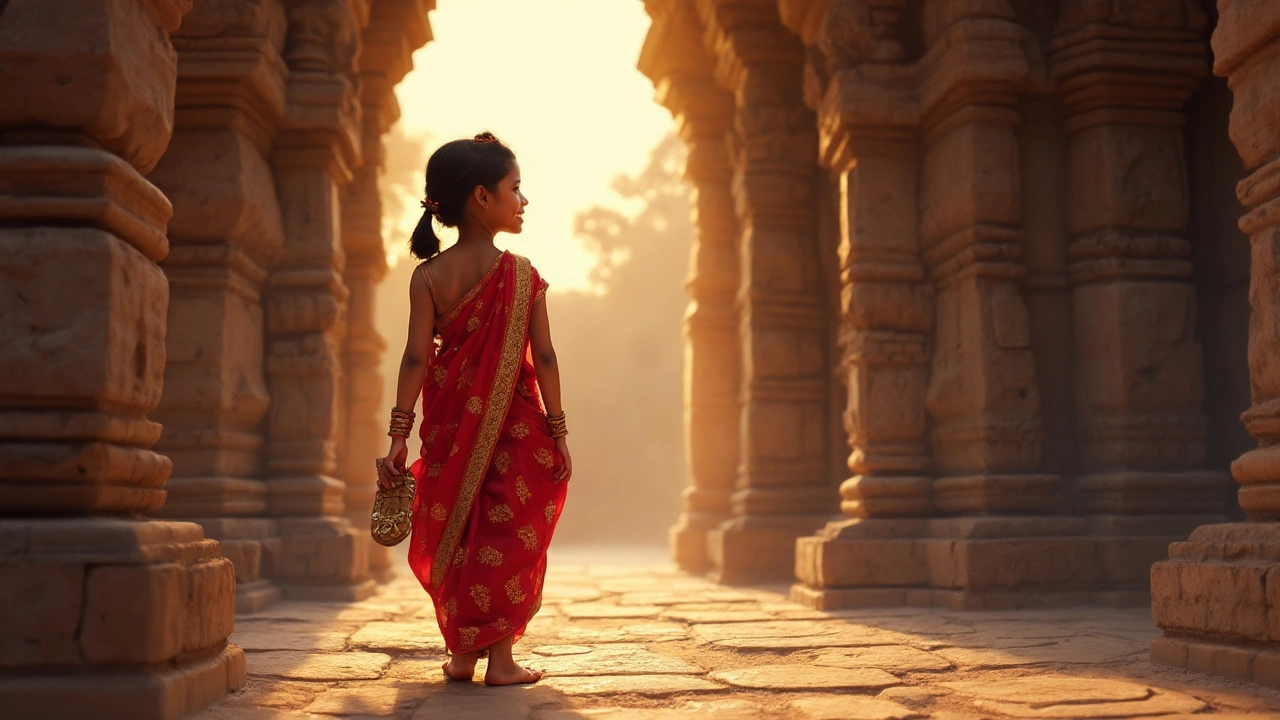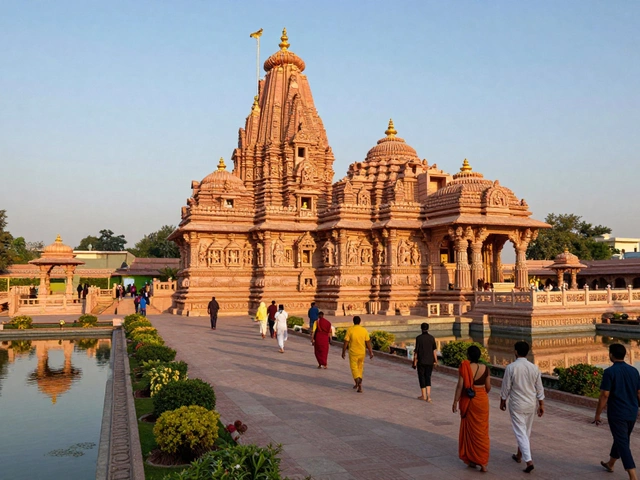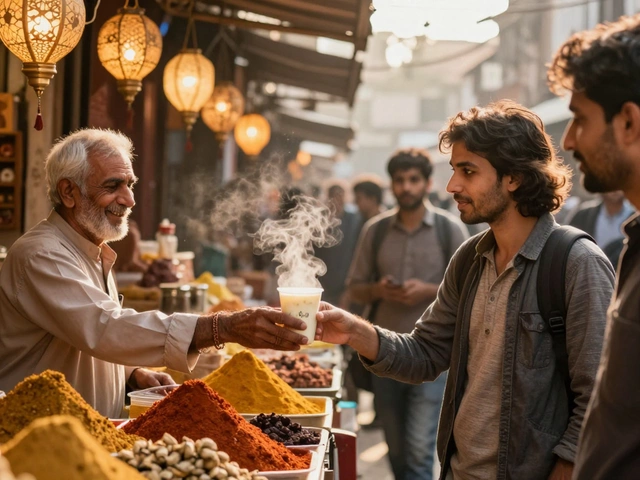So, you're planning to dive into the vibrant and spiritual world of Indian temples? Awesome choice! But before you step into these sacred spaces, let’s talk dress codes—a big deal when it comes to temple visits in India.
First things first, modesty is key. You’ll find that most temples require visitors to cover their shoulders, arms, and legs. Think long skirts, loose pants, or traditional outfits like saris and salwar kameez. It’s less about fashion and more about respect.
Why does it matter, you ask? Well, Indian temples aren’t just tourist spots. They’re active places of worship for millions, and dressing appropriately shows respect for local customs and beliefs. Besides, it’s a lovely way to experience the culture firsthand!
- Understanding Temple Dress Codes
- Traditional Indian Attire
- Footwear Etiquette
- Cultural Sensitivity
- Practical Tips for Visitors
Understanding Temple Dress Codes
Navigating the world of temple dress codes across India might seem a bit tricky at first, but it's all about respect and cultural sensitivity. The guidelines are not meant to be restrictive but to honor the sacred nature of these spaces.
In general, Indian temples have a few common rules when it comes to attire. A primary one is to dress modestly. This means keeping your shoulders, arms, and legs covered. You're likely to be turned away if you show up in shorts or sleeveless tops. Opt for loose-fitting clothes that won’t cling to your body.
Why Modesty Matters
The emphasis on modesty in attire comes from the belief that temples are revered spaces where one should dress in a way that reflects humility and respect. It's not just about religious significance; it's about communal harmony and showing respect for diverse practices.
Traditional Attire Preferences
Many temples have a traditional outlook on what's considered appropriate. For women, wearing a saree or a salwar kameez is often preferred and seen as the gold standard of temple attire. These outfits are not only modest but also celebrate Indian culture in its traditional essence.
Some temples even have specific clothing requirements. For instance, in South Indian temples, women might be asked to wear saris, while men wear dhotis. It’s a good idea to check specific guidelines for each temple before your visit. This can usually be found online or you can ask a local guide.
Modern Exceptions and Tips
While traditional clothing is favored, many temples today are adapting to accommodate tourists from around the world. You might see signs at temple entrances offering shawls or wraps that you can use to cover yourself appropriately if you're not dressed according to the dress code.
Curious about what exactly to pack for a temple tour? Here’s a simple checklist:
- Long skirts or dresses
- Loose pants or a salwar kameez
- A shawl or scarf for covering shoulders
- Comfortable footwear that’s easy to slip on and off
While it's easy to get caught up in the dress code details, remember that dressing appropriately for temple visits enriches your experience, allowing you to connect with the atmosphere and spirituality of these amazing places.
Traditional Indian Attire
When thinking about visiting an Indian temple, the first thing that might come to mind is sarees. They're the epitome of traditional Indian attire and pretty much always a safe bet for a temple visit. The best part? Sarees not only look elegant but also fulfill the modesty requirement. They cover the shoulders, arms, and legs effortlessly.
Another popular choice is the salwar kameez. This includes a tunic (kameez) and loose-fitting pants (salwar), often paired with a dupatta (a long scarf) to drape over the shoulders. This outfit is comfortable, practical, and perfect for navigating through temple crowds.
Why Traditional Attire?
One of the big reasons for these clothing choices is respect. Temples are sacred spaces, and dressing in traditional Indian attire shows a willingness to engage with, and respect, local customs. Plus, it's often what's expected by temple guidelines!
For teenage girls and young women, opting for a churidar – a slightly different style of salwar that’s tighter and more fitted around the legs – is another modest and comfortable choice.
Quick Tips for Wearing these Outfits
- Stick to lighter fabrics like cotton, especially in summer. It gets hot!
- Avoid bright reds or deep blacks, as some temples consider these colors inappropriate.
- Pair your outfit with minimal jewelry to keep the focus on your respectful attire.
Rocking traditional attire is about blending in, showing respect, and making the most of your temple visits. It’s not just about what you’re wearing; it’s about what it represents.

Footwear Etiquette
First and foremost, let’s talk shoes. One of the unwritten rules in most Indian temples is leaving your footwear at the entrance. It’s a mark of respect for the sacredness of the space. Plus, it keeps things clean and serene, which is totally the vibe you want inside a temple.
Before entering, look for a designated area or rack where visitors typically leave their shoes. Don’t worry about losing them; these places are usually pretty secure. Remember, this isn’t just an Indian thing. Removing shoes is a common practice in many cultures when entering holy sites.
If you’re worried about picking something suitable, opt for sandals or slip-ons. They're not only easy to remove but also help beat the heat. Let’s face it, no one wants to wrestle with laces at the temple gate. Plus, your feet will thank you after a long day of exploring.
Now, here’s a little tip: temple tours in India often involve a lot of walking on uneven or warm surfaces. And depending on the season, the ground can get really hot. Consider packing a pair of socks in your bag if you’re heading to multiple temples in one day.
And hey, it’s not just about practical choices. Being mindful of temple etiquette and the local dress code means you’re stepping into a community’s space with empathy and understanding. Want extra karma points? Familiarize yourself with each temple's specific footwear rules, as some might have unique traditions.
Cultural Sensitivity
Feeling a bit unsure about how to fit in when visiting temples? No worries! When it comes to cultural sensitivity in Indian temples, a little understanding goes a long way. It's all about showing respect to the traditions and practices of the community.
Understanding Local Customs
Many temples follow rituals that are deeply rooted in history and spirituality. It's important to be aware that traditions vary across different regions and religions, so a quick read-up or asking the locals can really help. For instance, some Hindu temples have separate entrances for men and women, and others might require you to wash your feet before entering.
Embrace Traditional Attire
Wearing traditional clothes is more than just about the dress code—it's a way to connect with the culture. Even if you're sporting a borrowed outfit, it’s a gesture that locals genuinely appreciate. Plus, it's a perfect opportunity to experience the vibrant styles firsthand.
Communication is Key
If you're unsure about something, just ask. Most people are friendly and willing to help you understand their practices. Keep a respectful tone and show genuine curiosity, and you might even get invited to participate in a ceremony or two!
Understanding the Environment
Remember, temples can be crowded. Be mindful of your surroundings, maintain a moderate tone of voice, and avoid any flashy behaviors or photography inside the temple unless permitted. Observing such practices shows you're respecting the sanctity of the place.
By taking these small steps, you'll not only follow the temple dress code but also immerse yourself in a rich cultural experience that goes beyond mere tourism.

Practical Tips for Visitors
Ready to embark on your temple adventures? Here are some practical tips to ensure a smooth and respectful visit.
Choose the Right Outfit
When thinking about your temple dress code, prioritize comfort and modesty. Light, airy fabrics are ideal given the Indian climate. Cotton is your friend! Avoid sleeveless tops and short skirts. Remember, a scarf or shawl is handy for covering your shoulders if needed.
Footwear Dos and Don'ts
Most temples require you to leave your shoes at the entrance. Consider wearing flip-flops or sandals that are easy to slip on and off. A pro tip? Carry a bag to keep your footwear if you're worried about mix-ups or missing shoes.
Respect and Cultural Sensitivity
While visiting, try to be mindful of ongoing ceremonies and rituals. Flash photography might be a no-no, so be sure to ask or look out for signs. If you're unsure about something, don't hesitate to ask a local or a temple guide—they're usually happy to help!
Timing It Right
Mornings and late afternoons are often the best times for temple visits. It's cooler, and you’ll likely find fewer crowds. Plus, the morning and evening aarti ceremonies can be quite mesmerizing.
Keeping the Essentials Handy
Carry a water bottle, but be respectful about where you drink it—some areas are considered too sacred for food and drinks. Also, bringing a small pack of tissues or a towel might come in handy, especially in warmer areas.
With these tips, you’re all set to explore the incredible temples of India while respecting the cultural dress code and traditions. Happy travels!






